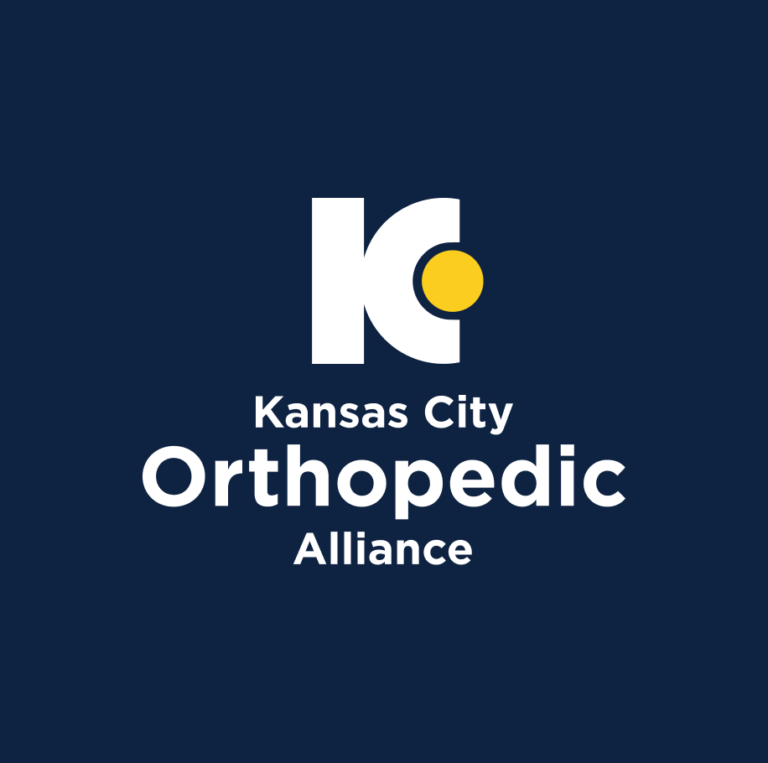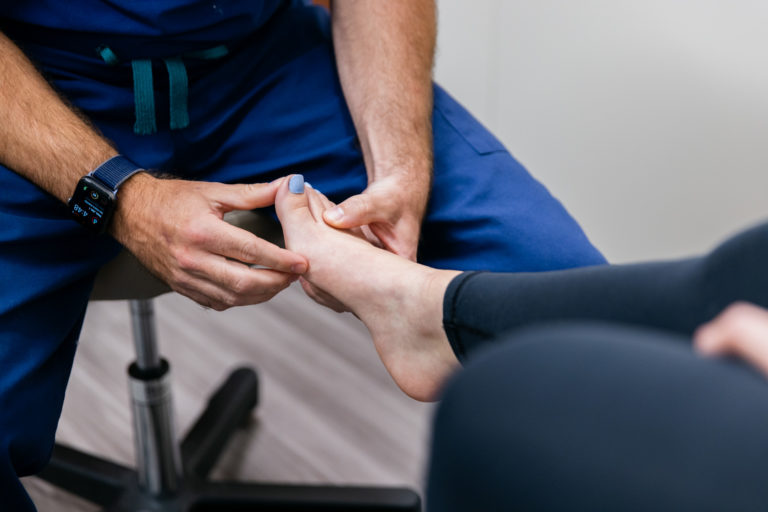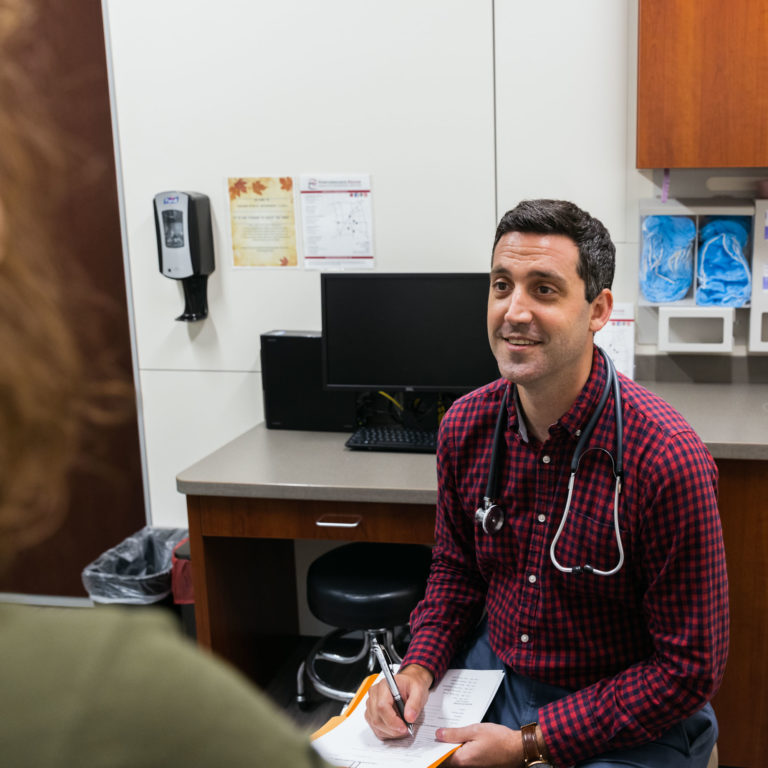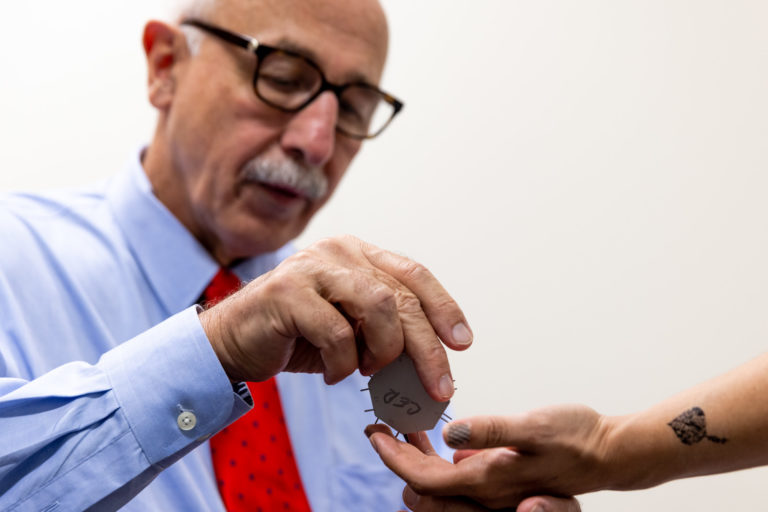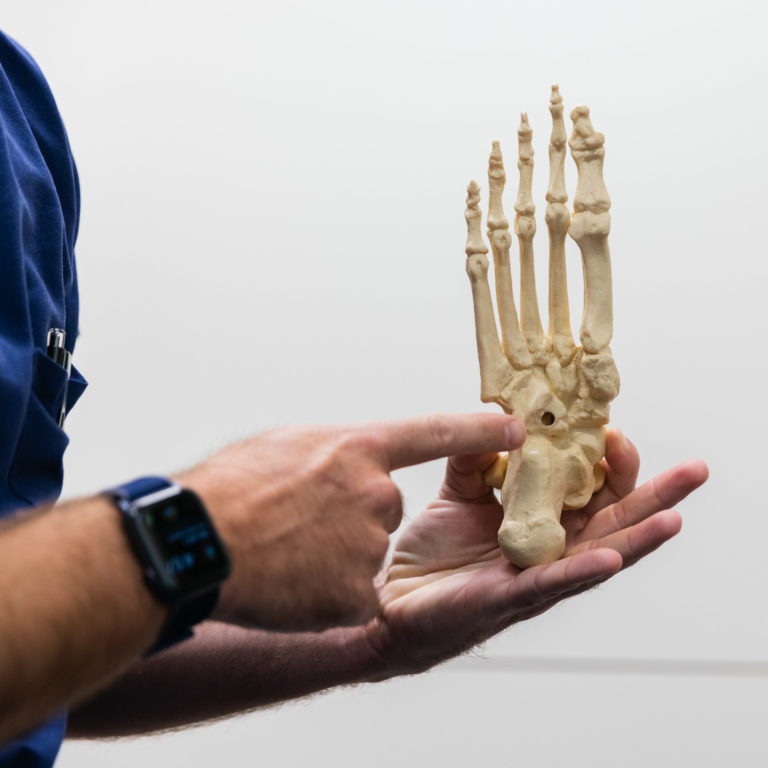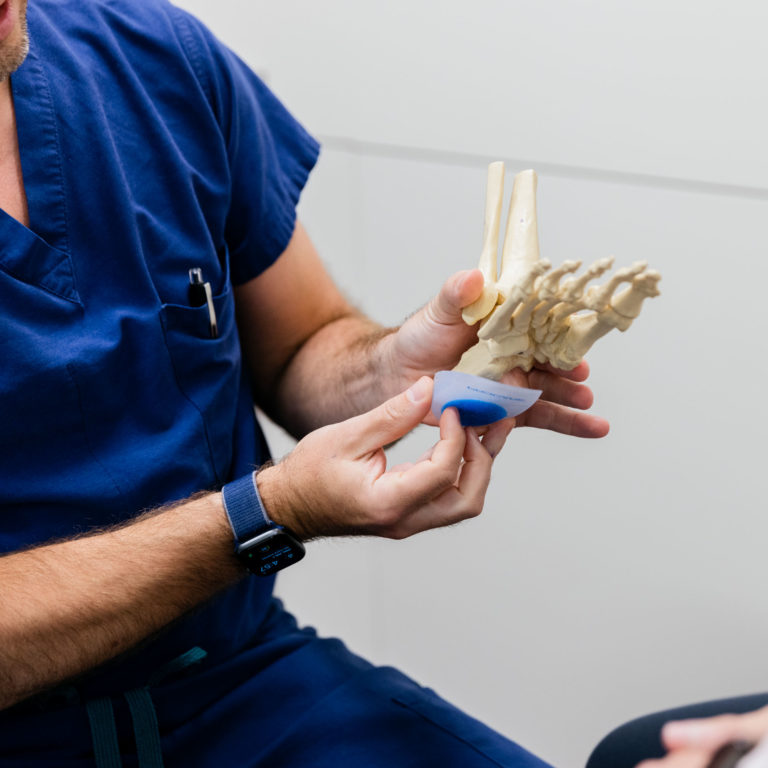Hammertoe & Bunion Correction in Kansas City
Hammertoe & Bunion Correction
Long-term relief for those dealing with bunions.
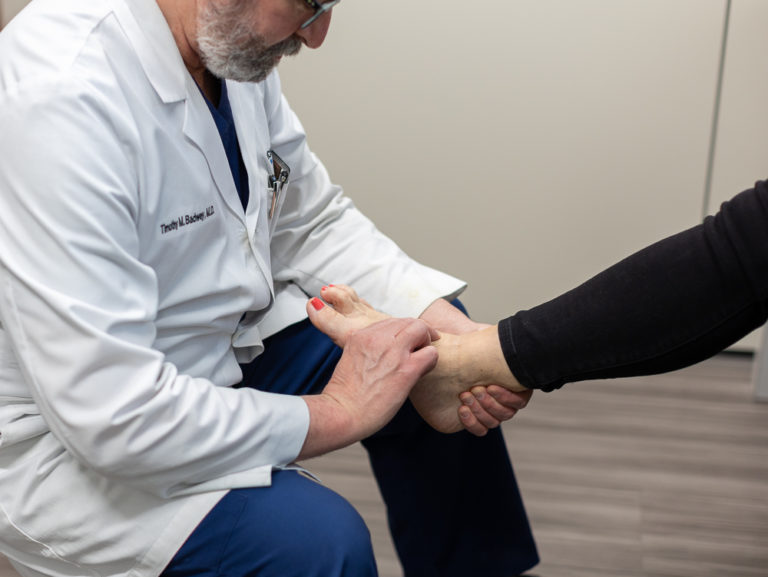
Hammertoe & Bunion Correction Kansas City
What is Hammertoe & Bunion Correction?
The effects of daily wear and tear, in addition to acute injuries, abnormal balance, or even wearing ill-fitting shoes, can cause issues such as hammertoe and bunions to appear.
Feet and ankle issues can be debilitating to deal with, particularly when performing everyday tasks such as walking or climbing stairs. Bunions occur when a person’s big toe bends toward the other toes on your feet, rather than straight ahead. This happens when the bone or tissues at the bottom of your big toe joint are under stress over time, causing the big toe to point inward. Hammertoe, meanwhile, occurs when the tendons, muscles, or ligaments in the toe are imbalanced, causing the toes to bend in the middle of the joint.
If these issues with your toes go untreated, they can result in long-term complications such as arthritis, skin irritation and bone breakdown. If you need bunion or hammertoe correction, the experienced orthopedic foot and ankle physicians at Kansas City Orthopedic can perform a number of different treatments. When you visit a specialist at KCOA, we focus on creating a treatment plan based on your specific conditions, symptoms, and recovery goals.
Choosing hammertoe and bunion treatment in Kansas City is a decision that typically involves guidance from your primary care doctor and orthopedic physician.
When you choose Kansas City Orthopedic Alliance, one of our highly-trained orthopedic foot and ankle specialists will conduct an initial evaluation to better understand your condition. After a complete review of your results, your provider will discuss whether hammertoe correction, traditional bunionectomy or lapiplasty is the best treatment option for you.
Kansas City Orthopedic Alliance Foot & Ankle Injuries Assessment
Assessing the Injury
Determining the proper hammertoe and bunion treatment process starts with an assessment from one of our experienced providers.
You can think of foot and ankle pain as a spectrum, with some instances being more severe than others. The KCOA orthopedic specialists always focus on each patient and their concerns before creating a treatment plan.
Therefore, during your initial appointment, we will often ask questions such as:
The answers to these questions help shape the next steps of the assessment process and guide our physical examination. After we complete your assessment, KCOA providers often begin with a physical examination to help determine the origin point of your pain. In some cases, patients may require advanced testing to get a full diagnosis.
- Does your pain currently limit you or your activities?
- Does walking or putting weight through your foot increase your symptoms?
- Has your pain progressed or worsened recently?
- Have you experienced any tingling or numbness in your foot that makes tasks difficult?
- Did you notice or hear a popping sound at the time of your injury?
- Have you noticed any change in your symptoms that has made it more challenging to function?
- What are your lifestyle goals?
- How has pain affected those goals?
Examination
X-Ray
Also called radiographs, an X-ray captures a picture of the foot and toes. Orthopedic physicians may order an X-ray to rule out the possibility of a fracture (broken bone), osteoarthritis, or other bone-related conditions.
Magnetic Resonance Imaging (MRI)
MRI captures images of muscles, bones, intervertebral discs, and tendons to help provide information other tests can’t detail. During an MRI, you will lie on a table that slides into a tube-shaped scanner. The machine creates a magnetic field around you, using pulsed radio waves to form the MRI images.
Symptoms
Common Signs and Symptoms of Bunions
With so many different parts working together in your feet and ankles, there are many potential causes of pain. And each of those causes has a unique set of symptoms.
Bunions and hammertoe can be incredibly painful to deal with, making day-to-day life significantly more challenging by affecting your ability to walk and perform other tasks. They can also be genetic, as patients with family members affected by bunions often deal with the issue as well. Bunion and hammertoe issues can also develop because of injuries, arthritis, and even the types of shoes you wear. Symptoms of bunions and hammertoe include:
Signs of bunions include:
- Pain (specifically near the big toe)
- Tenderness
- Redness
- Hardened skin on the bottom of the foot
- A bump located on the big toe forcing it inward
- Curled or bent up toes
- Stiffness and restricted motion in the big toe
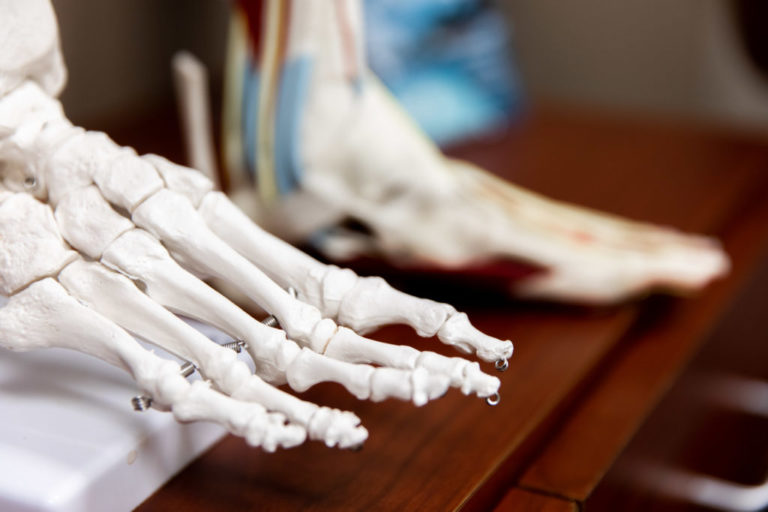
Causes
Common Signs and Symptoms of Hammertoe & Bunions
With so many different parts working together in your feet and ankles, there are many potential causes of pain. And each of those causes has a unique set of symptoms.
Bunions and hammertoe can be incredibly painful to deal with, making day-to-day life significantly more challenging by affecting your ability to walk and perform other tasks. They can also be genetic, as patients with family members affected by bunions often deal with the issue as well. Bunion and hammertoe issues can also develop because of injuries, arthritis, and even the types of shoes you wear.
Treatment Alternatives
Non-Surgical Treatment
In most cases, surgery is not the first option for treatment at Kansas City Orthopedic Alliance. If we can treat your foot and ankle issues with more conservative treatments, we’ll choose those options. We typically exhaust all non-surgical options prior to recommending surgery.
Non-surgical treatments for ankles and feet include:
-
- Physical Therapy – Stretching and mobilization activities along with guided exercises, may be helpful in reducing the pain and dysfunction caused by a hammertoe or bunion.
-
- Medications – Your doctor may recommend over-the-counter NSAIDs (Non-steroidal anti-inflammatory drugs, such as Advil)or prescription medications. Especially with NSAIDs, you should always talk to your doctor to ensure they are the right treatment for you.
-
- Orthotics – Proper fitting shoes and the use of custom orthotics can help relieve the symptoms of bunions and hammertoe, as well as alter the angle of the affected area
F.A.Q.
Frequently Asked Questions
Kansas City Orthopedic Alliance is here to help.
Our care is personal. Our team is knowledgeable. And we’re more available than ever.
With access to board-certified specialists across Kansas City, we have the tools to meet almost every musculoskeletal condition.
Our Locations
Overland Park, Kansas
10777 Nall Ave Suite 300 Overland Park, KS 66211Leawood, Kansas
3651 College Blvd. Leawood, KS 66211Kansas City, Missouri
Saint Luke's Medical Plaza #1 4320 Wornall Rd., Ste. 610 Kansas City, MO 64111Belton, Missouri
Belton Regional Campus 17067 S Outer Rd #301 Belton, MO 64012Blue Springs, Missouri
St. Mary’s Medical Center, Main Entrance 203 NW R.D. Mize Road, Suite 200 Blue Springs, MO 64014Shawnee Mission, Kansas
7450 Kessler St ste. 140 Merriam, KS 66204Prairie Star (Lenexa, Kansas)
Prairie Star 23401 Prairie Star PkwyBldg. B, Ste. 220 Lenexa, KS 66227
